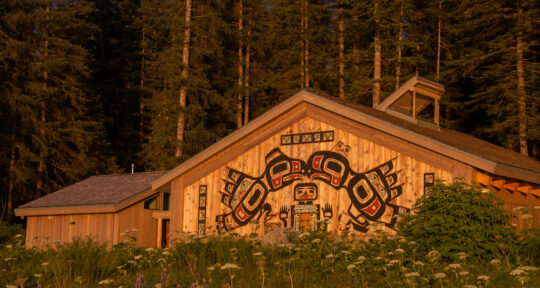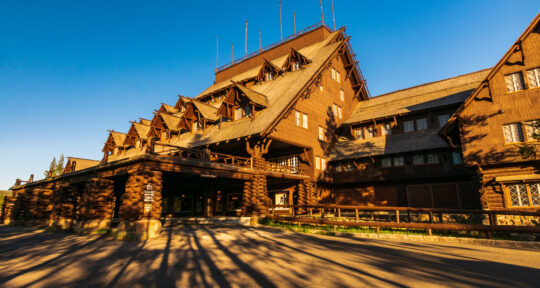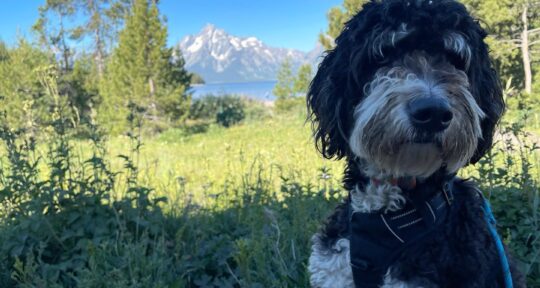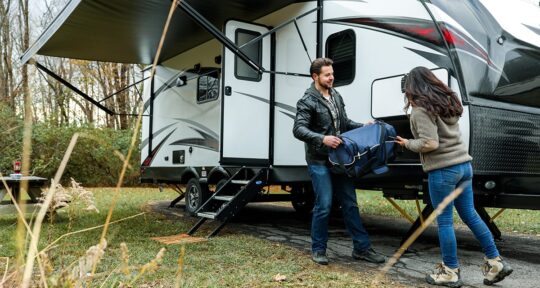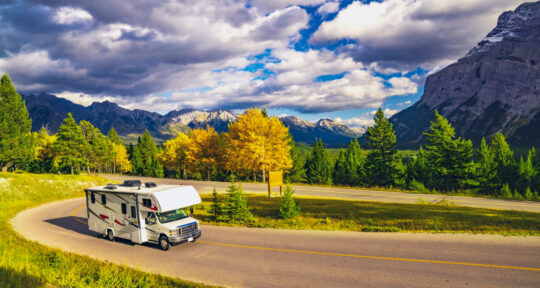After rain comes sunshine—and after even more rain comes a desert super bloom. At least that’s the case right now in Anza-Borrego Desert State Park in California, where the second “once-in-a-decade” super bloom in two years has covered the desert valley in a patchwork of dandelions, sunflowers, sand verbena, brown-eyed primrose, and more.
For those of us who are used to seeing this desert in its usual muted shades, the explosion of colors is a magical thing: Fields of yellow and purple have erupted among cacti and ocotillos. Even the areas without flowers are green and lush—an unusual sight in an area that on average only sees around 6 inches of rain per year.
But if you’re planning on catching a glimpse of the spectacle, be prepared to battle hordes of fellow visitors.
Flowergeddon 2? Not quite
The town of Borrego Springs, located within the state park, is the hub of the flower-viewing activities. It’s also home to both a visitor center and the Anza-Borrego Desert Natural History Association (ABDNHA), where volunteers are handing out free maps and offering advice on which kinds of flowers to spot where.
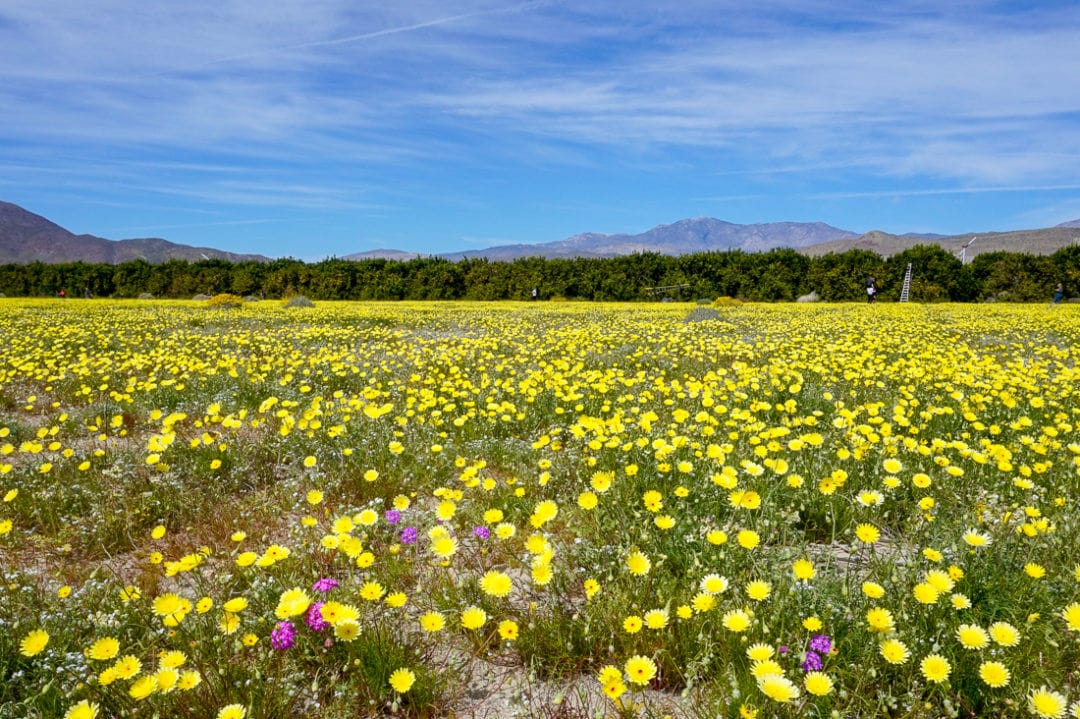
Borrego Springs is a sleepy desert town, far removed from any major highways. It’s mostly known for its collection of more than 100 full-size metal sculptures, including dinosaurs and a 350-foot serpent, that are scattered across the desert. A quiet desert paradise just a few hours from Los Angeles and San Diego, it’s a much smaller and less crowded alternative to popular weekend getaway spots like Palm Springs and Joshua Tree.
But during super bloom season, Borrego Springs transforms into Southern California’s trendiest destination, as city dwellers from all over the state and country flock to the desert to catch a glimpse of the wildflowers.
During the last super bloom, in 2017, the town was not prepared for the boom of visitors ready to be delighted by this (supposedly) rare phenomenon. Restaurants ran out of food, there was nowhere to park, and the narrow mountain roads leading down into the valley were backed up for miles. The term “Flowergeddon” was coined to describe the chaos.
Avoiding the crowds
This year, Borrego Springs saw it coming. And, with a little planning, you may even be able to avoid sharing your wildflower experience with too many others.
“In most cases it’s possible to get away from the crowds simply by walking into an area a little further than the crowds do, as most people don’t venture too far on foot,” says Mike McElhatton, ABDNHA’s program director. He cautions people to stick to established routes, and to behave respectfully among the flowers.
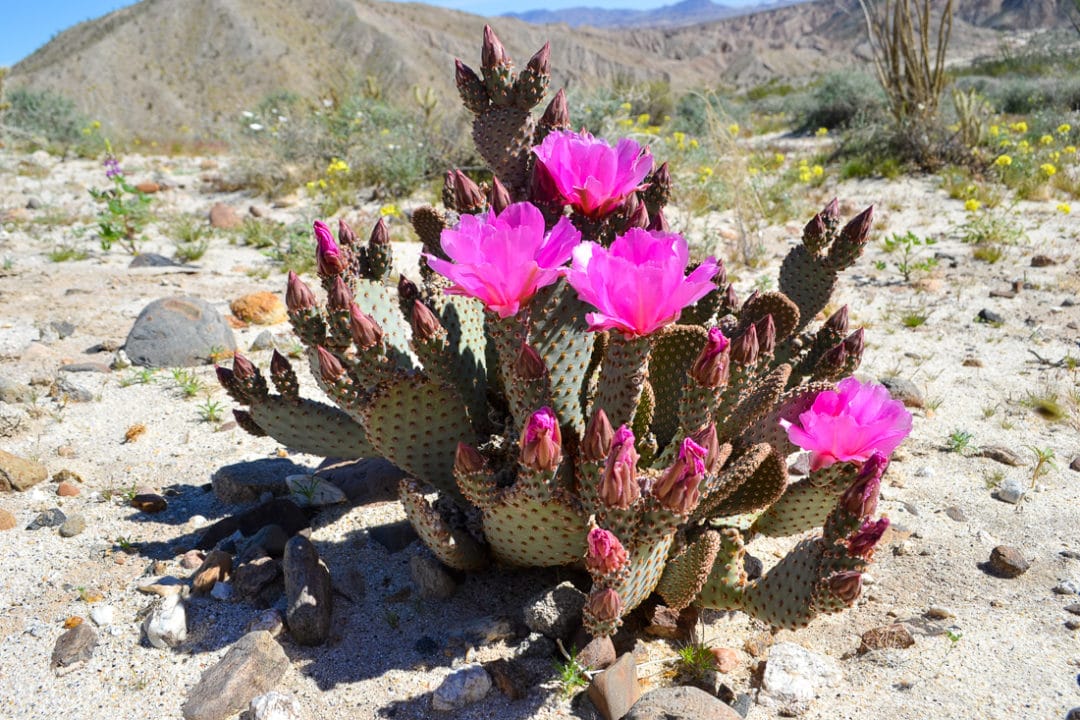
“There are footpaths that have been created by previous visitors and we ask the new visitors to stick to those,” he says. “We are asking people to be respectful and for the most part they are doing that.”
Weekends are, not surprisingly, the most popular time to visit. If you’re able to get out to the desert on a weekday, you’re all but guaranteed a much more quiet experience. And you still have some time: The bloom is expected to last well into April—although exactly how far is impossible to predict.
“Our cooler than normal weather is preserving the bloom and will make it last longer,” McElhatton says. “Also, new areas are coming in to bloom as other places fade. We expect the bloom to be strong through this month, and into April.”
If you go:
Visit ABDNHA’s special wildflower website at borregoblooms.org for the latest super bloom updates and maps.

